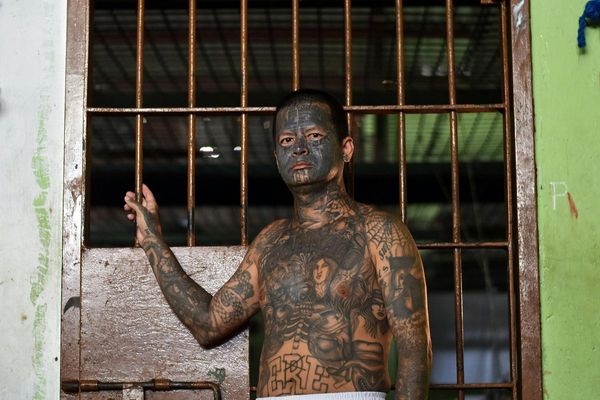It took nearly 20 years, but Rhonda Holland became a homeowner in January. She achieved the milestone after helping her daughter get through college — and then deciding once and for all that she would remain in Pittsburgh.
"I didn't feel there were any obstacles to buying a home. It was all just my motivation," said the 56-year-old Gateway Health employee. She purchased her $199,000 Penn Hills home while participating in Dollar Bank's Homeownership Program.
Ms. Holland had previously gone through Dollar Bank's program in 2004. She was cleared to close on a North Side home — then suddenly lost her job at Highmark due to a mass layoff. For years, the North Side native strongly considered leaving Pittsburgh altogether. But now, after being steadily employed at Gateway Health for nearly six years, the time was right to try again.
Although she experienced no obvious signs of discrimination along her path to homeownership, the single most significant barrier she and many other Black homebuyers in Pittsburgh now face is affordability — especially in city neighborhoods — which is one reason why data shows Pittsburgh's Black population is growing in places like Penn Hills, Monroeville and Stowe.
Image DescriptionRhonda Holland in front of the home she purchased in January, fulfilling her lifelong dream of homeownership.(Alexandra Wimley / Post-Gazette)
Meanwhile, the Black population has experienced noticeable drops in recently gentrified communities such as East Liberty, Lincoln-Lemington-Belmar and Garfield.
Rising home prices over the past decade in previously affordable neighborhoods have effectively pushed many Black homeowners out of the city, according to a new report by Pittsburgh Community Reinvestment Group, a nonprofit coalition of leaders working for economic justice to revitalize Pittsburgh.
PCRG reports Pittsburgh's Black population dropped by approximately 10,500 people, or 13.4% from 2010 to 2020, compared to an overall 0.9% decrease in the whole population. During that same period, median home prices in the region increased significantly.
Pittsburgh's median home value increased by 69.5% from $88,000 in 2010 to $149,200 in 2019, according to the community reinvestment group.
"It's easy to see that rising home prices across Pittsburgh are shrinking the opportunities for working class people. And Blacks are at the forefront because the pay gap is still pretty big between Black working class residents in Pittsburgh and whites," said Ernie Hogan, PCRG executive director.
According to the 2020 U.S. Census, Black city residents are moving further out to more affordable communities such as Penn Hills, Stowe, McKeesport, McKees Rocks, Turtle Creek, Braddock and Swissvale.
In Allegheny County overall — excluding the City of Pittsburgh — the Black population grew slightly by about 1,800 people, or 1.1%. That increase didn't offset the loss of Black residents from the city.
That could exacerbate other issues.
"As people move out to try to continue to survive, they're also handicapping themselves and putting themselves behind the eight-ball in that the transportation options as you go out farther are less," Mr. Hogan said.
With longer bus rides or fewer options to get to work sites, living further out might make it harder for them to connect to better paying jobs or education or even health care or better services, he said. "So, in a lot of cases, we're really handicapping our minority and Black populations in a big way here."
Status quo
In part as a result of historic racial discrimination in housing — such as redlining, a practice where banks denied credit for people in minority neighborhoods — the city continues to be segregated by socio-economic status and absent any identifiable enclave for Pittsburgh's Black middle class.
The community reinvestment group found nearly 75% of Pittsburgh's majority Black communities are located in census tracts that rank in the bottom 50% of neighborhoods for median household income. The majority of Pittsburgh's Black residents live in neighborhoods that have higher family poverty rates, vacant housing units and lower than the average overall household incomes.
This has been the status quo for years, said John Boyle, a research analyst at Pittsburgh Community Reinvestment Group and author of the report titled "Taking Stock: A Decade in Decline for Black Homeownership in Pittsburgh."
Mr. Boyle said the organization compared the data for Black Pittsburghers in 2010 with 2020 and saw that it had changed by less than half a percent. "It just seems that upward mobility isn't necessarily decreasing," he said. "But it's certainly not improving."
He said access to lending for home purchases, home renovations, and refinancing is another area where Black households lag white households in the region.
In 2020, Black applicants submitted 2,761 mortgage applications in Pittsburgh and Allegheny County for home purchases, home improvements and renovations, and refinancing. Among those applicants, 51.8% resulted in an approved loan, according to the U.S. Consumer Protection Bureau.
That same year, white applicants submitted 49,293 mortgage application resulting in a 68.4% approval rate.
Pittsburgh Community Reinvestment Group concluded that much of the inequality in mortgage lending over the last eight years stems from the average Black applicant reporting annual income nearly $38,000 less than white applicants.
The community reinvestment group report pointed out that about 54% of Black Americans have no credit, or poor to fair credit (which is considered to be anything below 640 on a scale of 300 to 850). Financial institutions denied Black Pittsburgh applicants based on their credit history 30 times more often than white applicants over the reporting period studied.
"It's not just getting into a home," Mr. Boyle said. "But does your home have enough value that you can actually use that to refinance? And if you're in a home, how do we keep you in it?
"There was almost a sense that we were seeing a little bit of an uptick and then the pandemic happened," he said. "Now the housing market has changed dramatically since 2019 into the pandemic."
PCRG is calling for a multi-pronged approach to addressing the problem.
The organization suggests the city of Pittsburgh put more resources into creating affording homeownership in neighborhoods. The city and county should continue making investments in downpayment assistance programs. Financial institutions need innovative mortgage products specifically geared toward low income borrowers and they should change credit models to penalize medical debt and student loan debt less harshly.
"We need to be thinking about setting an example for eliminating the pay gap issue," Mr. Hogan said.
Credit repair and counseling
As a single father raising a 12-year-old daughter, Quinton Anderson made it a priority to be a homeowner after renting for seven years.
He achieved his goal in December while participating in Dollar Bank's Homeownership program. It took a couple of years to wait out the pandemic shutdown and work out some credit issues, but he was finally approved for a 30-year mortgage at a 1.9% interest rate.
Image DescriptionQuinton Anderson with his daughter Noellah, 12, outside of the home he purchased in December after taking Dollar Bank's classes.(Alexandra Wimley / Post-Gazette)
His monthly mortgage payments are $593 on the $120,000 three-bedroom, two-bathroom house they share, which is located in the Springdale School District.
"My biggest thing was the school district. If the schools in the areas didn't have the best rating, I didn't feel it was best to put my daughter there," said the 34-year-old pharmacy technician.
"I wanted a better lifestyle for me and my daughter as well," he said. "Instead of paying rent, I can leave a legacy for her."
Mr. Anderson and Ms. Holland are among thousands of African American men and women who have obtained home mortgages in Pittsburgh through Dollar Bank's program, which was started in 1999.
Bank officers work with aspiring homebuyers, starting with a review of their credit report and one-on-one credit counseling and credit repair. They learn about budgeting, credit and homeownership in a group educational setting.
More than 1,000 people apply each year for program. At any given time, there are hundreds of people participating in the bi-weekly training sessions.
SSB Bank, a community lender in McCandless with $260 million in assets, also made a significant number of mortgage loans to low income borrowers last year. More than 28% of the bank's total loans granted in 2021 were made to borrowers in low to moderate income tracts.
J. Daniel Moon IV, president and CEO, said SSB Bank's lending to low-income borrowers was double the peer average. "Working with all of the local low-income programs sponsored by community development groups uniquely positions the bank to serve the community's needs," Mr. Moon said.
Morton Stanfield, a senior vice president and head of community development at Dollar Bank, said over the last three years, the demand has increased significantly.
"A large majority of the applicants we have are hard working and their credit just needs a little bit of work," he said. "They just need that motivation and knowledge to get to work on the process and get it done."
In recent years, he said one external barrier has become more of a problem.
"One of the biggest challenges has been the ability of borrowers to find a home they can afford, specifically in the city proper," Mr. Stanfield said.
Dollar Bank will be holding its 23rd annual workshop on homeownership at the David L. Lawrence Convention Center on May 14. It had been an event focused on single mothers called "Mortgages For Moms" but was rebranded last year as "The Way Home Free Homeowners Workshop."
Low income people may qualify for downpayment and closing cost assistance through the program. The match had historically been set up so that for every $1,000 the individual saved, Dollar Bank would match $3,000. Last year, the bank raised its match to $5,000 when an eligible individual saves $1,000.







